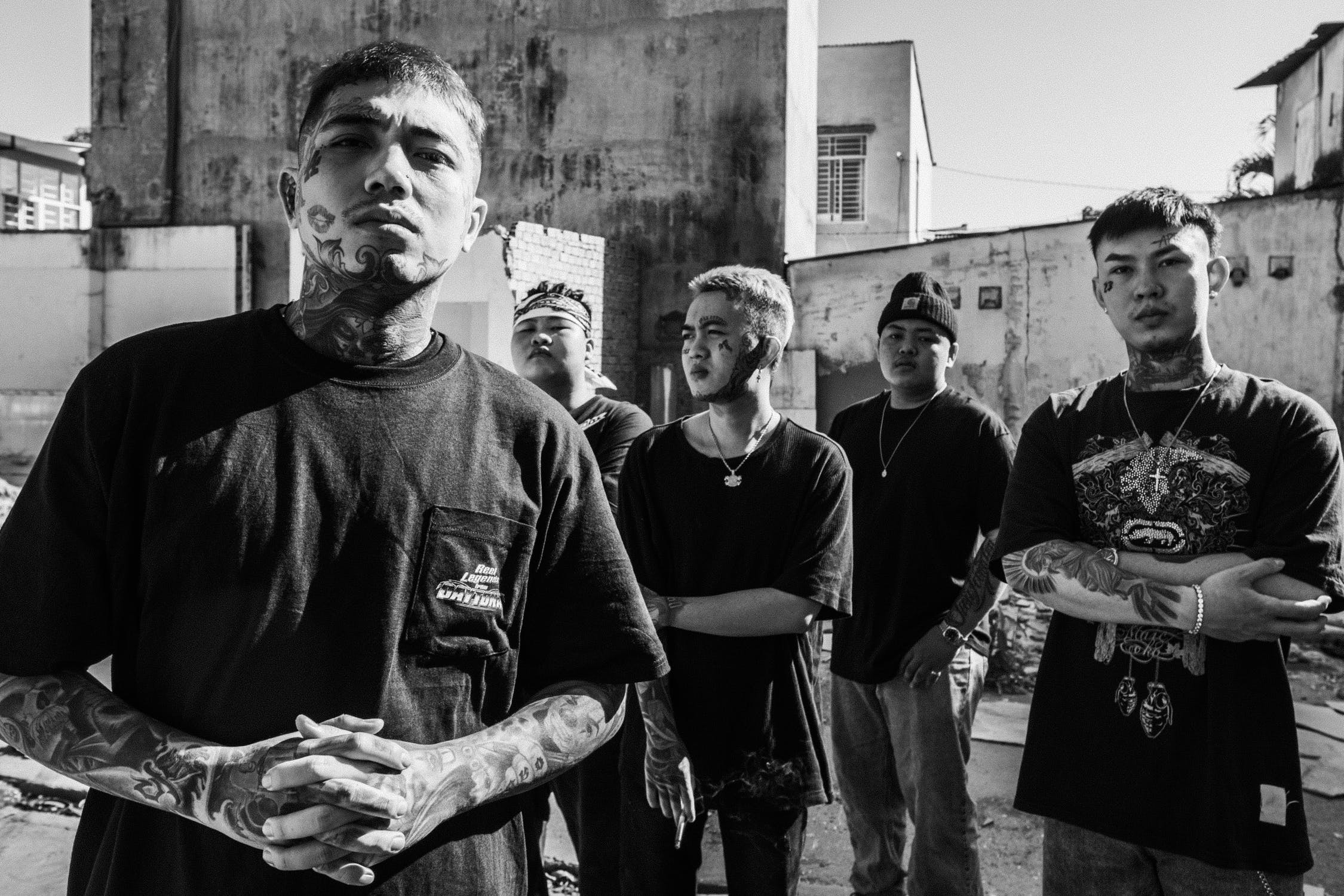
Singapore is often extolled for being one of the safest countries with the lowest crime rates. It is almost counter-intuitive for us to imagine the existence of gangs in modern Singapore. For most of us, secret societies simply do not fit into our vision of modern Singapore. The recent arrests in Chinatown of two groups of people charged with suspected involvement as members of an unlawful society, however, might impugn our assumptions. As it turns out, while secret societies might have diminished since the 20th century, organised crime has not been thoroughly eradicated. Interestingly enough, we begin to witness a new face of organised crime which has taken on a new modus operandi in modern times, sometimes materialising itself in the form of cybercrime.
Before we probe into the present landscape, you might be wondering what organised crime looked like in the history of Singapore and how it has developed over the years.
How did secret societies form in Singapore?
The early secret societies formed in Singapore can be traced to the Tian Di Hui (天地会) which was set up in Fujian – believed to be the first triad ever formed. The Hongmen (洪门), the first ever secret society established in Singapore, traced its origins to the Tian Di Hui.
These secret societies were seen as a fraternity for Chinese immigrants who appreciated the network of both moral and financial support from their fellow brothers. Values of loyalty, righteousness and brotherhood were of paramount importance to triad members. For the many new Chinese immigrants who found themselves isolated by the colonial government, secret societies performed the function of a sanctuary, offering them help and a sense of belonging. These secret societies, contrary to popular belief, held a lot of moral authority which was also recognised by the state. The state sought the help of secret societies whenever major disputes happened within the Chinese community as the Chinese population believed that the secret societies offered better representation of their needs and interests. Secret societies were, in some light, seen positively by both the community and the state.
We tend to associate secret societies with illicit and criminal activities, but it is worth noting that they did not dabble in purely illegal activities and ran lucrative legitimate businesses concurrently. The opium farming syndicates were also the same groups that were involved with the pepper and gambier businesses at that time. Interestingly enough, production and consumption of opium was not illegal in colonial Singapore. When it did become illegal, secret societies carried on their activities partially because of how profitable the market was, but also because many of them had become victims to opium addiction themselves.
What led to their downfall?
The Peace Preservation Act of 1867 and the Dangerous Societies Suppression Ordinance of 1869 were heavy blows to secret societies. The Peace Preservation Act gave the government the power to detain and deport Chinese immigrants who were convicted of involvement in triad activities. This discouraged them from joining secret societies and had severe debilitating effects on the power and influence of secret societies. The Societies Ordinance 1890 was a re-enforcement of the 1869 Ordinance and bestowed upon the government the powers to inspect any society deemed prejudicial to public security and peace. As intended, this was heavily disruptive to the operations of secret societies and gradually contributed to the inevitable decline of secret societies.
The British government also established the Chinese Protectorate which was responsible for the welfare and provision of assistance to newly arrived Chinese immigrants. Over time, the Chinese Protectorate was seen as a practicable resource for immigrants to tap on in order to resolve their problems, as opposed to turning their problems in to the secret societies in hopes of achieving a resolution which was hitherto widely seen as their best alternative. This removed the impetus of many immigrants from joining secret societies and irrefutably had a hand to play in the eventual decline of secret societies.
It would be erroneous to mistake decline for eradication, however. The Societies Ordinance merely forced existing societies to go underground. This meant that they continued to exist in smaller and more inconspicuous forms. This period after the end of the 19th century saw the rise of groups such as the Malay-dominated OMEGA (Orang Melayu Enter Gangster Area) gang and the female-dominated Red Butterfly group. While gang activity has been actively and heavily curtailed by law enforcement, secret societies were never removed. They were removed only from plain sight. This brings us to the present day.
What do secret societies look like today?
Secret societies continue to exist today, albeit in lesser prevalence. The most eminent of them all, the Salakau, which means ‘369’ in Hokkien, is known to take part in many illicit activities and many of their members have been convicted for crimes such as rioting and extortion. They have been traced to many modern gang incidents such as the Bukit Panjang slashing and the Downtown East slashing. Another notable incident that many will remember is when Tan Chor Jin, nicknamed the One-eye Dragon, performed a gangland-style shooting of a nightclub owner and was subsequently hung for his act of murder. Tan was a member of Ang Soon Tong, a gang which continues to exist today.
Police efforts have also been stepped up to curtail the power these gangs. The police branch has a Secret Society Branch (SSB) which is set up primarily to suppress and eradicate such gangs by way of, inter alia, surprise raids and targeted investigation. The Organised Crime Act of 2015 accords power to the public prosecutor to confiscate assets obtained from criminal activities before sentencing. This prevents the accused from having the financial freedom to jeopardise or interfere with investigations. Education and outreach programmes are also conducted by the Police to educate impressionable youths who think that gangs are cool and are susceptible to falling to the temptation of joining one. The Ministry and Social and Family Development conducts youth outreach programmes, as well as intervention programmes, to discourage youths who have been affiliated with gangs from going any further. This multi-pronged approach has helped to greatly suppress gang activity in Singapore.
It is crucial to keep in mind that secret societies have evolved with the changing times as well, however. While the threat of gangs operating physically has been, for the most part, neutralised by strict legislation and comprehensive preventive efforts, we begin to see a new face of organised crime in the form of organised cyber-crime. An example that quickly comes to mind is the cyber-attack on the Ministry of Defence in 2017, where personal details of military personnel were taken and leaked by hackers.
While Singapore has yet to see the emergence of well-known organised cybercrime gangs to the notoriety of some international groups such as Cobalt Cybercrime Gang and Lazarus Gang, experts and law enforcement say that it is a growing threat. Furthermore, secret societies have been making use of the Dark Web to access online markets in order to sell illegal items such as drugs and firearms. Mr Rick McElroy, a strategist at digital security firm Carbon Black, said that the Dark Web “allows for criminals with little technical knowledge to become cyber criminals faster and with better efficiency”. Using both the Dark Web and a series of encrypted websites, these sales and the people behind these sales cannot be easily tracked by authorities. If you thought that combatting secret societies was difficult, how intractable of a problem is the genesis of these ‘invisible’ societies? The wielding of parangs may have been replaced by the clicking of a mouse, yet the effects to society are not any less deleterious. This new face of organised crime is one that rightfully deserves more attention and we should expect that the authorities will have their hands full coming up with a strategy to counteract such a potent threat.
Final words
As it turns out, those of us who believed that Singapore is free of triad activity are regrettably mistaken. It would be a graver mistake, however, for any of us to think that the secret societies of today look and operate like those of yesteryear. As criminals learn and adapt, so must the rest of us hoping and working for a safe and secure society.
David Chao and Stephen Yeo
*The views and opinions expressed in this article do not constitute legal advice and solely belong to the author and do not reflect the opinions and beliefs of the NUS Criminal Justice Club or its affiliates.

